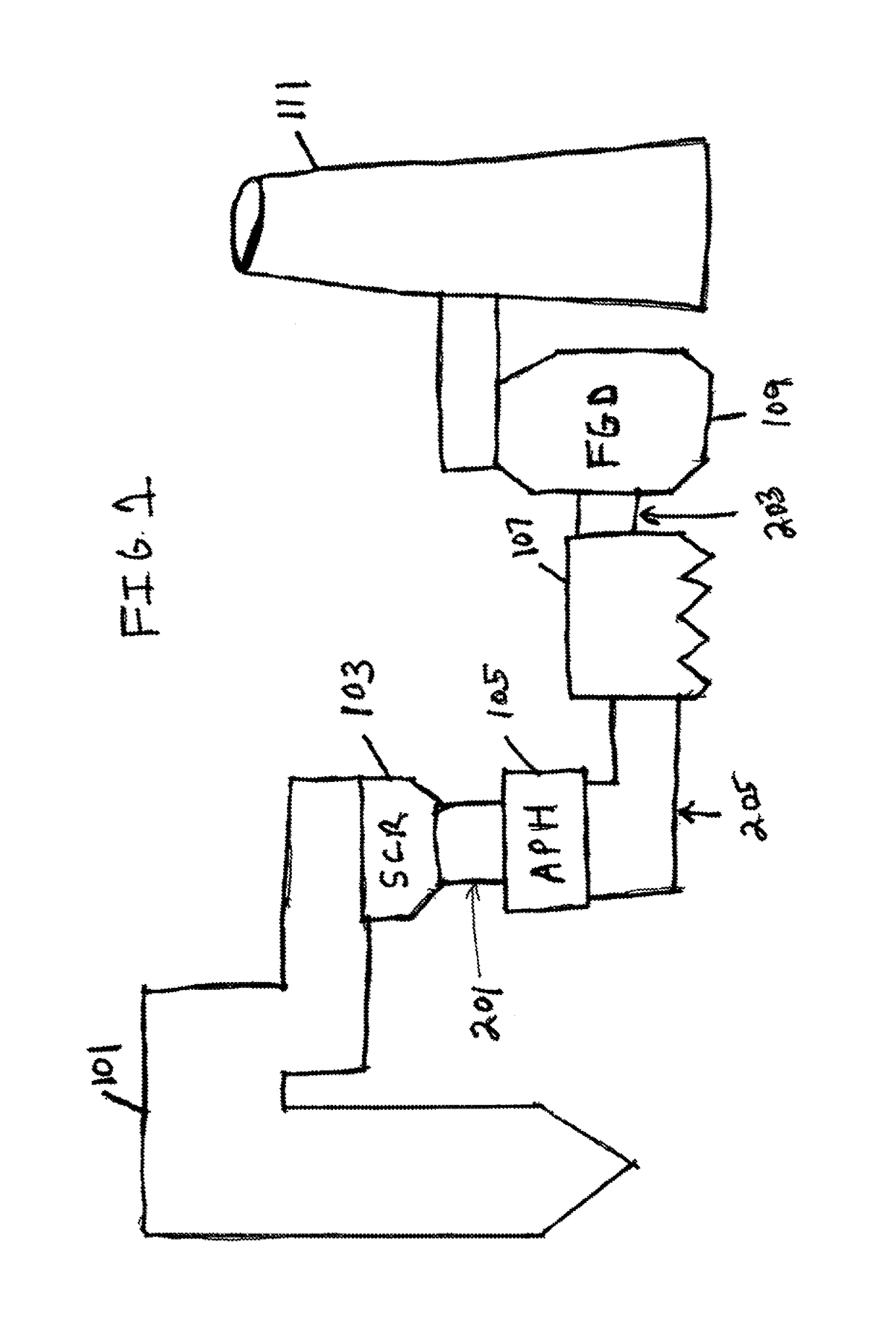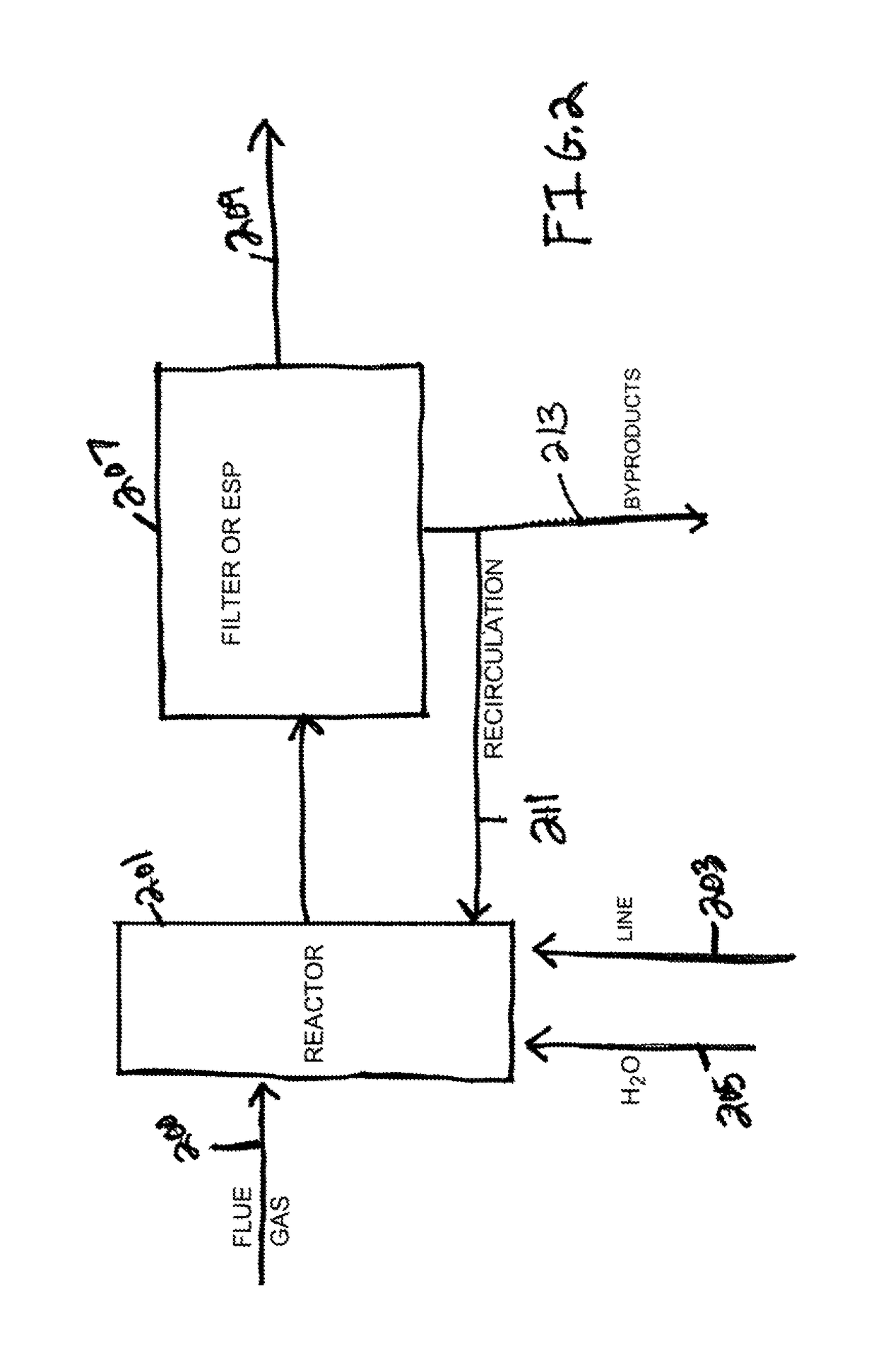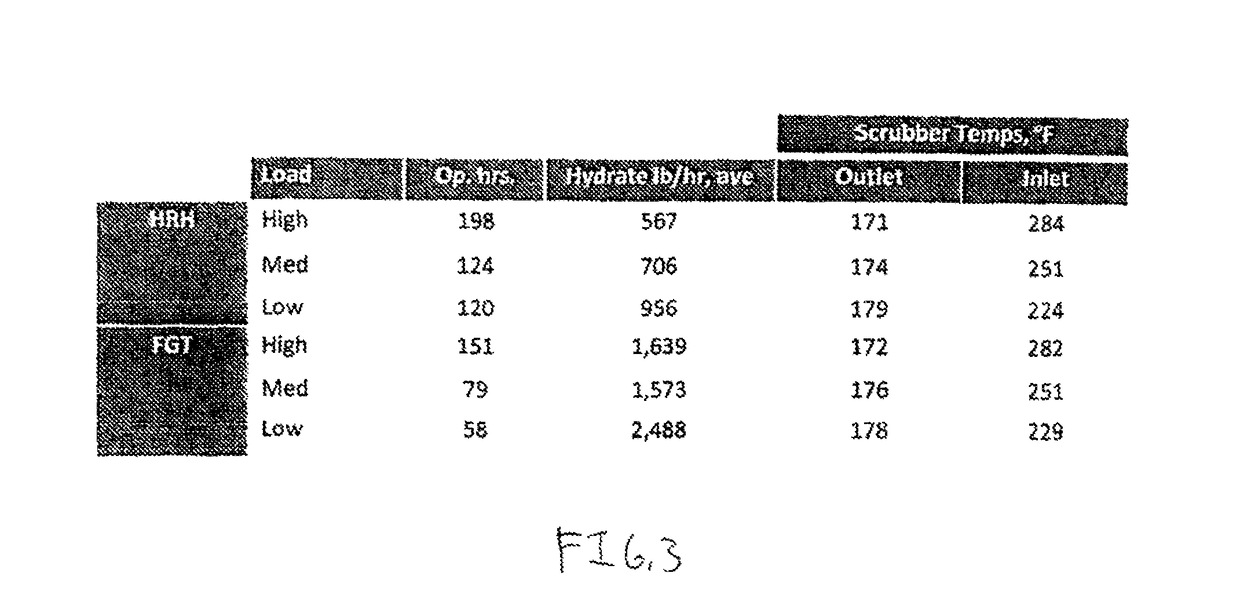Systems and method for removal of acid gas in a circulating dry scrubber
a dry scrubber and acid gas technology, applied in the direction of separation process, grain treatment, dispersed particle separation, etc., can solve the problems of affecting the removal efficiency of acid gas,
- Summary
- Abstract
- Description
- Claims
- Application Information
AI Technical Summary
Problems solved by technology
Method used
Image
Examples
Embodiment Construction
)
[0028]Most flue gas scrubbing systems are commonly focused on making sure that certain materials do not leave the flue stack and disperse in the air for environmental reasons. FIG. 1 shows a loose block diagram of an arrangement of a flue gas duct system such as can be used in a coal fired power plant. Generally, major components include the boiler (101), a selected catalytic reduction (SCR) system for reducing NOx emissions (103), an air preheater (APH) (105), a bag house or electrostatic precipitator (ESP) (107), a Flue Gas Desulfurization (FGD) unit (109), and then the exhaust stack (111).
[0029]Traditionally the FGD system (109) has utilized wet flue gas desulfurization (WFGD) which provides wet lime or limestone scrubbers where the calcium source (lime or limestone) is mixed in a slurry and introduced to the gas stream in a large reactor to “scrub” the SO2 from the gas stream. Most coals burned in these plants contain small concentrations of chlorine. The chlorine is readily sc...
PUM
| Property | Measurement | Unit |
|---|---|---|
| size | aaaaa | aaaaa |
| size | aaaaa | aaaaa |
| BET surface area | aaaaa | aaaaa |
Abstract
Description
Claims
Application Information
 Login to View More
Login to View More - R&D Engineer
- R&D Manager
- IP Professional
- Industry Leading Data Capabilities
- Powerful AI technology
- Patent DNA Extraction
Browse by: Latest US Patents, China's latest patents, Technical Efficacy Thesaurus, Application Domain, Technology Topic, Popular Technical Reports.
© 2024 PatSnap. All rights reserved.Legal|Privacy policy|Modern Slavery Act Transparency Statement|Sitemap|About US| Contact US: help@patsnap.com










